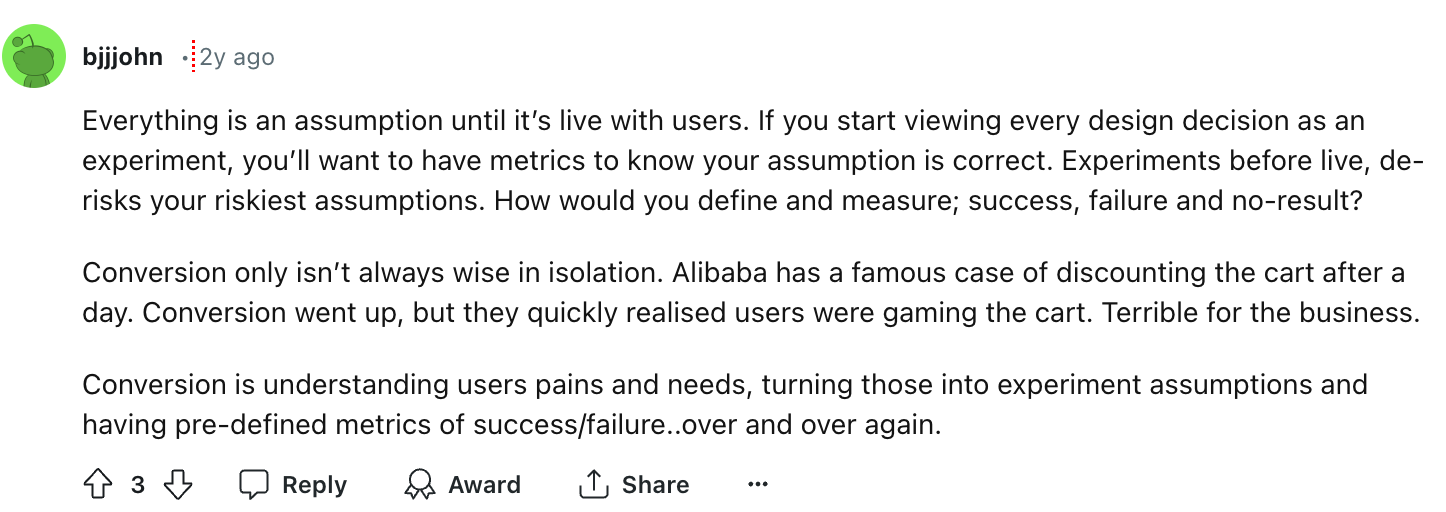Josh Hall, in his YouTube video, emphasizes that a high-converting website can guide visitors to take action. Whether it’s buying, or booking a consultation–that’s the power of a website. Being clear about your message and assertiveness boosts conversions. He points out that being personal, along with social proof, can build trust and engagement. All these can create a connection with your target audience.
Snapps courses are now available
To build high-converting websites, your small business needs to:
- Set clear goals for your website
- Identify your target audience and their needs
- Create an interesting value proposition
- Focus on first impressions and user experience
- Analyze user behavior and website analytics
- Gather and display social proof
Building a high-converting website leads to a few benefits. It attracts potential customers by implementing strategies like SEO. You can invite organic traffic to your business. Also, if your content is relevant, readers are more likely to convert into leads. As you think of all the ways to engage your audience, a visual hierarchy can also guide users to take action. 59% of users prefer well-designed websites. By optimizing your site for conversions, you can increase your purchases and services.

But, a conversion-focused website comes with trends that vary every day. What works for one business might not work for the other. Users mentioned that being aggressive with your website can be a major turnoff for users. It is important that you balance your strategies with user experience. It is as simple as saying that your website needs to be user-friendly. Without being too overwhelming, your website can enhance its performance.


In this article, here are tips for high-converting small business websites. We are going to carry out your brand’s message first, then bring your goals to the right audience. By following these strategies, you can attract and convert customers.
1. Set Clear Goals for Your Website
Setting clear goals can achieve website success. Without defining your objectives, you may lack direction. This can damage user experience and low conversion rates. Clear goals align every aspect of building your small business website. You can be one of the 91% successfully generating leads.

For starters, setting clear goals starts by:
- Identify your primary goal: What do you want your visitors to do on your website? Do you want them to buy? Or fill up a contact form? How about signing up for a newsletter? Be clear on what your main website goal is.
- Define secondary goals: Secondary goals can provide insights into user behavior. This also helps optimize your conversions. This includes adding items to their cart, buying resources, or exploring the website.
Now, to achieve your goals, you need a clear Call-to-Action (CTA). This directs your users towards your primary goal. Also, it’s important that you have a navigation menu so customers can find your products.
Some businesses have complicated objectives like “increase website traffic” or “get more leads.” Instead, it’s better to be specific. List goals like “increase online sales by 20% within six months.” This way, you have something to look forward to.
2. Identify Your Target Audience and Their Needs
Understanding who your audience is and addressing their problems creates a high-converting website. In fact, 71% of customers expect that your website addresses their needs. By gaining insights about your potential customers, you can meet expectations. This also gives a competitive advantage. You position your brand as a solution they have been searching for.

Nick Theriot, a YouTuber, has his take on targeting the right audience. As it influences conversions, a broad targeting is most likely to convert. It ensures higher engagement and lower ad costs. Effective marketing results in increased sales and scalability.
To maximize this second tip, you can:
- Conduct a market research: Identify your demographics. What are their interests, pain points, and how frequently do they browse?
- Create buyer personas: A buyer persona involves your ideal customers. As buyers, what do you think are their goals, challenges, and preferred platform for communication?
- Collect necessary data: Use surveys and feedback to gather information on user behavior.
- Distribute your audience: Put your audience into segments based on their common characteristics. What age group do they belong to? Where do they live? What product of yours is preferable?
Moreover, focus on making your website user-focused. Aside from clear CTAs and navigation, personalize your content. Base the content you make on user preferences. Address their concerns, educate them on how your products can solve their concerns, and show your brand’s expertise. Also, it’s a plus if your website is mobile-responsive. You can attract 79% of users.
Be careful not to assume that all your visitors are the same because they are not. Test different approaches and optimize your campaigns based on data. As you distribute your audience, you can maximize high conversion rates.
3. Create an Interesting Value Proposition
The average attention span is 8.5 seconds. If your business doesn't seem attractive enough, you need an interesting value proposition. This makes a difference so a visitor can convert to a customer. Your value proposition shows how effective your website is. Communicate why your products matter to your audience.
If you’re planning to create a new proposition, this is how you start:
- Make it clear and relevant: Define your unique selling points and the benefits of your products. You can address the problems and create a demo video about how your services can solve them.
- Focus on the advantages: What is the outcome of your products that the audience can expect? Avoid putting on very technical words. Communicate in a way that makes it easy for others to understand you.
- Align with the needs of your consumers: Your audience needs to feel that you are helping them.

A tip: add a hero section with your value proposition in it. It can display your message, the benefits and value of your products. Also, make your visuals show your proposition. This can create an emotional connection with your target. Remember not to make exaggerated claims you can’t deliver! This will destroy your brand’s credibility.
4. Focus on First Impressions and User Experience (UX)
First impressions matter in high-converting website designs. Let’s say someone visits your website. It only takes 0.05 seconds for them to tell if it’s good or bad. A well-designed website can captivate an audience. It can also encourage them to explore other parts of your website. With these said, you can increase your conversion and enhance user experience.
Aside from understanding your target audience and simplifying navigation, also optimize for speed. Fast loading times are beneficial for user experience. You can start by compressing images and code if you can! Also, be consistent in the visuals of showcasing your identity. Use consistent colors, fonts, and imagery.

Mike Locke gives us an impression on how important UX is for a website. He mentioned the value of user satisfaction and retention. It makes interactions more efficient and enjoyable. It provides a competitive advantage by differentiating your website and products in a crowded market. This can also reduce costs related to user support. Additionally, excellent UX enhances brand perception. Users can trust you and stay loyal to you.
Avoid cluttering your website. Keep it simple and focus. Make it readable as well so you can improve user experience.
5. Analyze User Behavior and Website Analytics
Understanding user behavior can create a high-converting site. As website analytics provide data, make informed decisions to improve your site. For small businesses, you can use this data to have 15-20% improvement on investment (ROI).
There are different ways to analyze user behavior and website analytics. Here are some:
- Install tracking tools: Use tools like Google Analytics. These tools can help you track your users and their behavior. It also tracks where your traffic is coming from and other conversion metrics.
- Conduct Behavior Flow Analysis: This helps you see the paths users take on your site. You can figure out which pages can convert and what causes them to leave your site.
- Research on your competitors: Analyze what’s on your competitor’s websites. This can help you understand how they attract conversions.
- Regularly analyze data: You must review your analytics reports monthly or quarterly. Because trends always change, you can adjust your strategies based on these insights.

Be careful not to overly rely on numeric data. You can use qualitative data from user feedback and surveys of your products. Also, don’t forget to follow GDPR, CCPA, and other data privacy regulations. Make your small business legal under the law and for your users.
6. Gather and Display Social Proof
Social proof may be the last tip but is still powerful to convert a website highly. Social proof usually comes as testimonials, reviews, and more. Most likely, 92% trust a brand more when they see a good review. When customers see a good review, it validates their decision to buy products from you. You can increase conversion rates through this.
But how can you do this?
- Ask for testimonials: Reach out to your previous customers. Ask for their feedback. In exchange, offer them discounts or other special offers.
- Showcase case studies: Interview people and highlight how your service solved their problems.
- Use contents shared by customers: Encourage people to share experiences on social media. This can help increase conversion rates as well.
- Showcase your awards and certifications: Display all your recognitions at your website. This can improve credibility as well.

As you follow these social proof tips, it’s better if you place them on your homepage or landing pages. Your case studies can be a separate page if you prefer. Also, have ‘review widgets’ on your website. This can help you get ratings from Google, Yelp, or Trustpilot into your site. Filter out your reviews. Don’t use fake reviews to gain a good reputation. Always strive to be authentic.
Other Must-Have Features for a High Converting Website
A high-converting website needs to be customer-friendly, efficient, and secure. As much as it needs a lot of details, it needs to remain simple to enhance user experience. Here are ten essential features to transform your online store:
- Design needs to be responsive: Make sure your website functions well on all devices. This is from desktops to mobile phones.
- Loading times should be fast: Optimize your websites to load quickly. Cut wait times and reduce bounce rates.
- SEO-friendly code: A clean SEO code can improve your rankings on Google. This can also attract more organic traffic.
- HTTPS connection needs to be secure: Your customer’s data needs protection at all costs. This builds trust and credibility, and higher conversions.
- Contact information and forms: Provide clear and easy-to-use forms. This is so customers can reach you with their concerns.
- Social media integration: Link your social media accounts on your website. This can increase engagement.
- Content Management System (CMS): Use a CMS to update and manage your site’s content. You don’t need technical knowledge for this.
- Search functionality: Use a search bar that can find the products and services they need.
- About Us Page: This page talks about your brand’s story and values. It helps customers connect with your business on a personal level.
- Privacy Policy and Terms of Service: Inform customers about how you will use and protect their data. Implement this on contact forms, newsletters, and purchases.
5 Tips for a High Converting Ecommerce Website
- Keep Your Store Flexible: Include sections that are easy to update and easy to move. We prefer a drag-and-drop ecommerce website builder. If you have one, you can quickly adapt to sales, seasons, and promotions.
- Engaging Homepage Elements: Make sure that whatever elements you put, it can attract and get the interest of your target. Put CTA buttons that can let them take action of availing your products. Also, use reviews and ratings to give out trust signals. This builds customer confidence.
- Effective Product Pages: A product page needs to be clear with descriptions. Also place options where they can bundle products. To increase conversion rates, display all the reviews so people can see your brand’s visibility.
- Improve the Shopping Journey: Make the shopping process clear. Show them their shopping progress. Has it been dropped off at the courier? Is it on its way? When will the delivery take place? Update your customers from time to time. When checking out, you can also suggest additional items.
- Answer Questions and Show Real Reviews: Include a FAQ section and real customer reviews on your homepage. This is to address common questions and build trust with potential buyers.
Best SEO Practices for Small Businesses
- Keyword Research: Target high-volume, location-based keywords. For instance, if you're a bakery in Los Angeles, use keywords like “best cupcakes in Los Angeles.” Expect 45% higher click-through rate.
- On-Page Optimization: Simplify your website design for easy navigation. Optimize your homepage and service page based on keyword search results. This is 25% of effective SEO.
- Create High-Quality Content: Do content that addresses customer inquiries. Don’t forget to regularly update and provide solutions. Try maintaining a consistent content schedule. You can upload content every day to get 55% more traffic.
- Build Online Authority: Your testimonials, awards and certifications are most likely on your homepage. This allows future users to see your business as credible. So, encourage customers to leave reviews and respond to feedback.
- Optimizing for Local SEO: Create a Google My Business profile and have local-specific content. Dedicate a page for just one service and use structure URLs. States the area of your business and what specific city you’re in. For example, “/phoenix/arizona-residential-cleaning” for local services.
With these SEO practices and a few more
tips for your small business, you can attract more customers. These strategies optimize your website for search engines. Potential customers can know your business as a user-friendly brand.
Snapps.ai: The Top Secret Tool for High-Converting Websites
Snapps.ai is a powerful tool to build high-converting websites. It enables you to clearly identify your objectives through its platform. Once you have an idea, you can publish your site faster, better, and smarter. It comes with a tool called “Localgrids” for ranking reports. Also, it has SnappSEO that provides data on your SEO. This can optimize your website based on user behavior and analytics.
Snapps.ai emphasizes the importance of value propositions. This is through customizable templates and AI-driven tools. As you develop your websites, the platform helps you communicate your unique selling points.
Most importantly,
Snapps.ai is user-friendly, its drag-and-drop interface and integrates with Google. It ensures that your site can captivate audiences, build credibility, and optimize your websites.
Recent Articles
Our Support Heroes Are Here For You
Don’t waste time on tedious manual tasks. Let Automation do it for you. Simplify workflows, reduce errors, and save time for solving more important problems.



